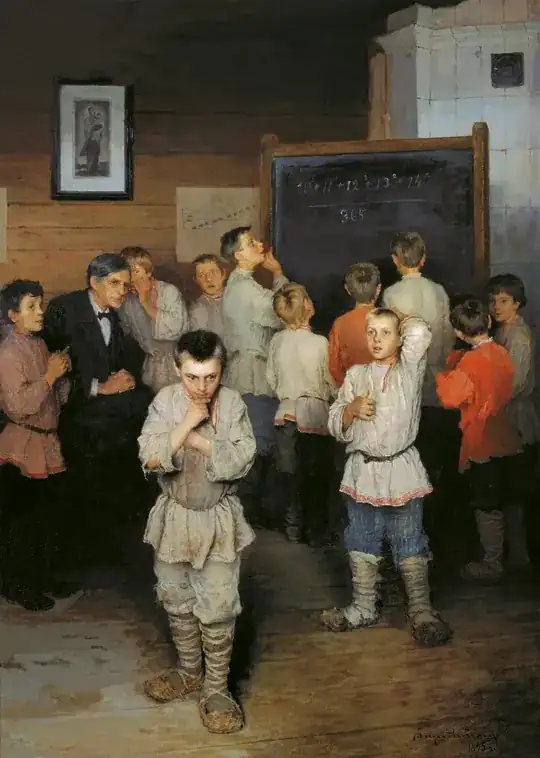This is the famous picture "Mental Arithmetic. In the Public School of S. Rachinsky." by the Russian artist Nikolay Bogdanov-Belsky.
The problem on the blackboard is: $$ \dfrac{10^{2} + 11^{2} + 12^{2} + 13^{2} + 14^{2}}{365} $$
The answer is easy using paper and pencil: $2$. However, as the name of the picture implies, the expression ought be simplified only mentally.
My questions:
Are there general mental calculation techniques useful for performing basic arithmetic and exponents?
Or is there some trick which works in this case?
If so, what is the class of problems this trick can be applied to?
